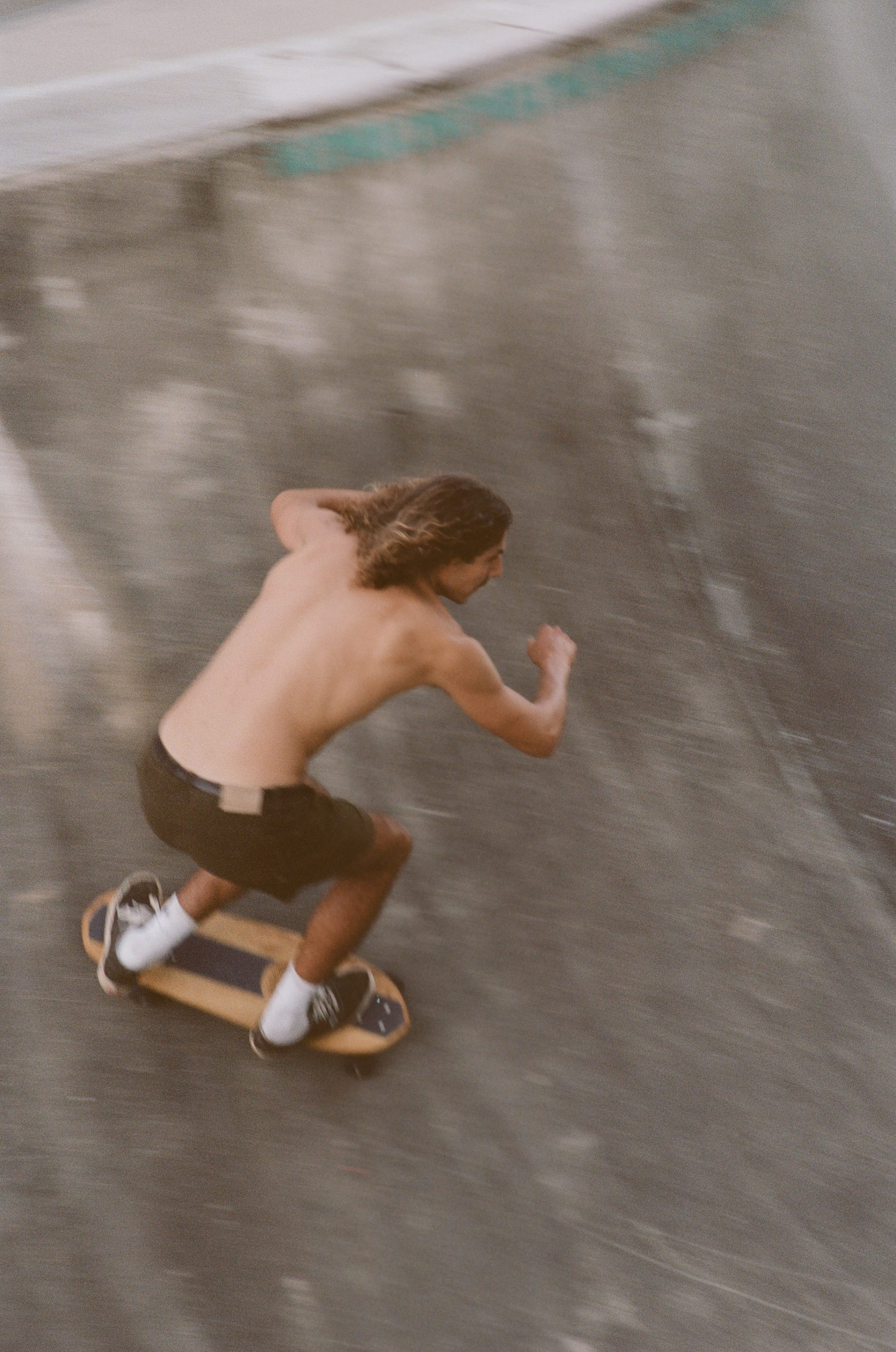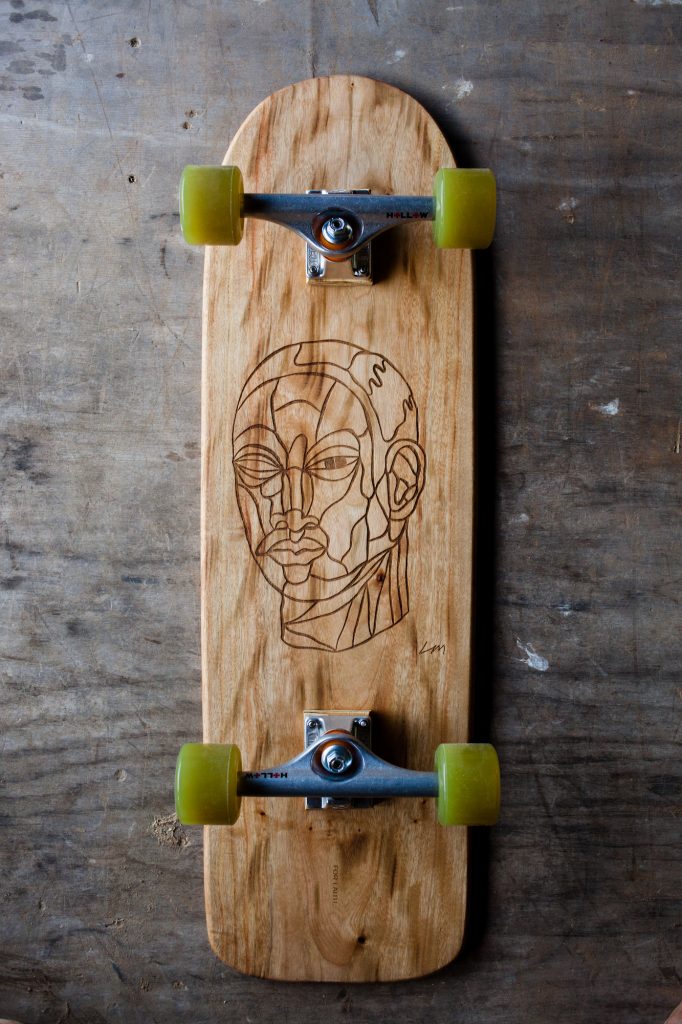
James Ioannou talks to Sally Schofield about using pesky camphor wood to make works of art.
Camphor laurel, as we know, is a bit of a pain in the arse in the area but is a great timber to use as the grains are unique. The timber is light weight yet still has strong structural properties. It’s great to create something that people consider waste into a product that’s beautiful.
 The process begins by visiting local timber yards. I mainly work with a crew in Mullum called Wood and Anchor, as they source heaps of local camphor. Many of the pieces are fallen trees or trees that have been removed for native regeneration purposes. I then sort through the C grade timber (also known as the ‘character’ grade), and handpick all the slabs for the next part of the process. Each slab has their own character and personality, making each board a one off, unique piece.
The process begins by visiting local timber yards. I mainly work with a crew in Mullum called Wood and Anchor, as they source heaps of local camphor. Many of the pieces are fallen trees or trees that have been removed for native regeneration purposes. I then sort through the C grade timber (also known as the ‘character’ grade), and handpick all the slabs for the next part of the process. Each slab has their own character and personality, making each board a one off, unique piece.
Sometimes I’ll discover little golden nuggets like acacia, silky oak, or hardwoods like red or spotted gums lying around the yards or in amongst a waste pile. There’s no need to cut down old growth timbers just to make a skateboard, that’s not Brother Board’s vibe.
The next process is docking, which is cutting the boards to their desired lengths. Then off too Mullywood Studio in Mullum for thicknessing and drum sanding. Then back to the workshop to start the design process.
I currently have two board designs, The Pinger and The Porter. These shapes are then marked out of the chosen slabs, holes drilled and rough cut with a jig saw. Now the boards are starting to take shape, I flush cut them with my router table, using my templates on top. Then round the edges using a radius tool. The shaping process ends with sanding the tops and bottoms, then hand sand the edges to complete.
All my boards are sealed with a hard wax oil called Rubio Monocoat. I love this product as it’s naturally made (mainly linseed oil) and has a low VOC and produces a satisfying finish.
Their flat shapes are inspired by the Dogtown era, in the 1970s when skateboarding began in California. When there were no waves to surf, they would make these boards with roller skate clay wheels and a piece of timber, and then skate the banks in drainage ditches.
I like keeping the boards flat as it has similar characteristics to a surfboard under your feet. The Pinger is a board that will definitely wake you up in the morning with a smile on your face. Fast and responsive feel, perfect for tight turn and skating in bowls. Inspired by the 90’s vert skateboards, wide outline for maximum control when ripping transitions and slashing copings. Comes in two sizes, 9” and 8.5”. Truck spacing is much tighter, making the board feel similar to a twin fin fish surfboard.
The other shape is The Porter, a board with a mellow, yet majestic feel that glides across the concrete with ease, getting you to the places you need to be fast, but smooth. It also comes in two sizes, 9” and 8.5”. Truck spacing is slighting larger, giving a more stable feel when at high speeds and drawn out turns, similar feeling to a mid-length single fin surfboard. The Porter is actually named in memory of my best friend, Luke Benjamin Porter, who sadly passed a few years ago.